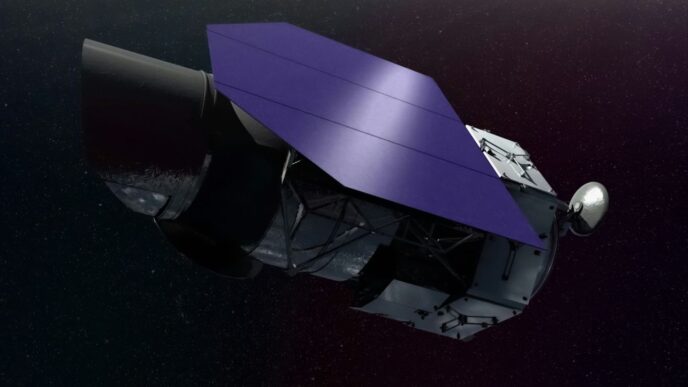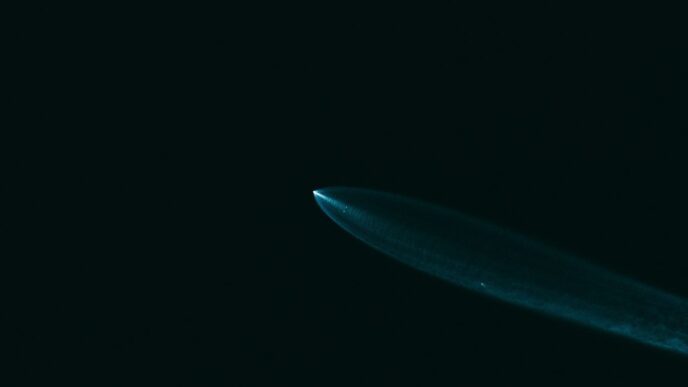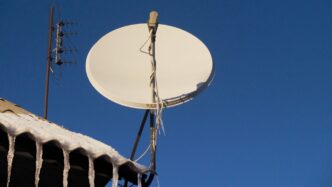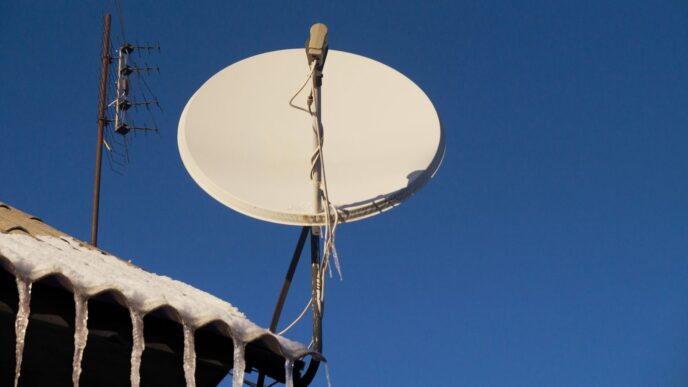Thinking about watching a rocket launch today in Florida? It’s a pretty cool thing to witness, honestly. We’ve put together a guide to help you catch all the action, from knowing when to look up to where you can get the best view. Whether it’s your first time or you’re a seasoned space fan, this rundown should make it easier to experience a liftoff. We’ll cover the basics so you don’t miss a thing.
Key Takeaways
- Get the latest on the Florida rocket launch today countdown and schedule.
- Find the best spots to watch launches from Kennedy Space Center and Cape Canaveral.
- Learn how to track liftoffs and what to do if a launch gets delayed.
- Discover live video feeds and real-time updates for all the missions.
- Understand the basics of rocket specs, mission goals, and launch paths.
Your Florida Rocket Launch Today Countdown
Alright, so you’re looking to catch a rocket launch today, huh? Florida’s Space Coast is the place to be, and keeping track of when these giants are heading skyward can feel like a full-time job. It’s not just about knowing the date; it’s about understanding the whole process, from the moment the countdown clock starts ticking to when that fiery plume disappears into the atmosphere.
Understanding The Launch Schedule
Keeping up with launches means knowing who’s launching what, when, and from where. It’s a busy place out here, with NASA, SpaceX, and United Launch Alliance all having their own schedules. You’ve got missions heading to the International Space Station, satellites for communication, and even deep space probes. The most important thing is to check the latest schedule because these times can shift.
Here’s a quick look at what might be on the horizon (remember, these are subject to change!):
- GPS III SV09 (Vulcan): United Launch Alliance. Projected for November 2025. Launching from Cape Canaveral Space Force Station.
- Artemis II: SLS Block 1. NASA. Tentatively scheduled for February 6th, 2026, around 1:09 AM UTC. Launching from Kennedy Space Center.
- Starliner-1 (Atlas V N22): United Launch Alliance. Projected for March 2026. Launching from Cape Canaveral Space Force Station.
Key Mission Details To Watch For
Beyond just the liftoff time, there’s a lot more to get excited about. What’s the rocket carrying? Is it a crewed mission or a payload of satellites? Knowing the mission objective gives you a better appreciation for the engineering and science involved. For instance, a Starlink mission is all about building out a satellite internet constellation, while a NASA mission like Artemis II is a step towards returning humans to the Moon.
Tracking Today’s Liftoffs
So, how do you actually track these things in real-time? Several resources are available. Many launches have live video feeds that start up well before liftoff. You can also find live blogs and social media updates from space reporting teams. These often provide minute-by-minute details, including any weather delays or technical holds that might pop up during the countdown. It’s a good idea to have a couple of these sources ready to go on launch day.
Prime Viewing Locations For Liftoffs
So, you want to see a rocket blast off from Florida? Awesome! It’s a pretty wild sight, and knowing where to park yourself can make all the difference.
Kennedy Space Center Vantage Points
While you can’t exactly set up a picnic inside Kennedy Space Center for a launch (unless you’re part of the mission, lucky you!), there are some spots nearby that offer a decent view. Playalinda Beach, which is part of the Canaveral National Seashore, is one of the closest public areas. It’s almost parallel to Launch Pad 39A, so you’re looking south along the coast to see the action. Just be aware there’s an entrance fee for the National Seashore. Another popular spot is Jetty Park Beach and Pier in Port Canaveral. It’s got a good view, but it can get crowded, and there’s a parking fee.
Cape Canaveral Space Force Station Spots
If you’re aiming to catch a launch from Cape Canaveral Space Force Station, you’ve got a few options. Many folks head to the beaches in Brevard County. The closer you are, the better the view, generally. Titusville, for example, offers spots along the Indian River, like Space View Park or Parrish Park. From there, you’ll look east across the water. If you’re further south along the river, you’ll be looking northeast. The closer you are to the launch site, the more intense the experience will be.
Beyond Brevard County Viewing
Think you’re out of luck if you’re not right in Brevard County? Not necessarily! Depending on the launch’s trajectory and weather conditions, you might be able to catch a glimpse from further afield. People have reported seeing launches as far north as Jacksonville Beach and Daytona Beach, and as far south as Vero Beach and West Palm Beach. Of course, the higher up you are, or the clearer the sky, the better your chances. It’s always a good idea to check the specific launch trajectory beforehand if you’re planning a trip from a bit further away.
Navigating The Launch Countdown
So, you want to catch a rocket launch, huh? It’s not quite as simple as just showing up. There’s a whole process to understand, and knowing what’s happening when can make all the difference between seeing a spectacular liftoff and a disappointing "scrub." Let’s break down how to keep track of these cosmic events.
When Is The Next Florida Rocket Launch?
Figuring out when the next launch is happening is the first step. You can’t just guess; you need reliable info. Websites and apps dedicated to space launches are your best bet. They usually have a calendar or a list that gets updated pretty regularly. This is your go-to resource for dates, times, and locations. Keep in mind that these schedules can shift, sometimes with little notice, so checking back often is a good idea.
Understanding Launch Windows
Think of a launch window like a specific time frame when conditions are just right for a rocket to take off. It’s not just about the clock ticking; it’s about weather, the position of the Earth, and what the rocket needs to do once it’s in space. These windows can be short, sometimes only a few minutes long. If the rocket doesn’t launch within that specific window, the whole thing gets pushed back.
Here’s a simplified look at what goes into a launch window:
- Weather: Clouds, wind, and lightning are big no-nos. Mission control has to have clear skies and safe conditions.
- Orbital Mechanics: The Earth is constantly moving, and so are the satellites or spacecraft the rocket is carrying. The launch has to happen at a precise moment so the payload ends up in the right orbit.
- Range Safety: Making sure the rocket’s flight path is clear of any aircraft or ships is super important for everyone’s safety.
What If A Launch Is Delayed?
Delays happen. A lot. It’s part of the game when you’re dealing with complex machinery and the unpredictable nature of weather. If a launch is delayed, it’s usually called a "scrub." Sometimes it’s just a short hold, and they’ll try again later in the same window. Other times, it means the launch is postponed to the next available window, which could be hours or even days later.
- Immediate Updates: The best way to find out about delays is to keep an eye on live video feeds. Commentators usually announce scrubs and the reasons behind them right away.
- Rescheduling: Mission control will work to find the next best time to launch, taking into account all the factors that caused the initial delay.
- Stay Patient: Rocket launches are complex operations. Delays are frustrating, but they’re often necessary to ensure the mission’s success and safety.
Experiencing The Rocket Launch Live
Watching a rocket blast off from Florida’s Space Coast is something else. It’s loud, it’s bright, and it’s a moment you won’t forget. But how do you actually catch this spectacle live, especially when you can’t be there in person?
Live Video Feeds For Every Mission
Don’t worry if you can’t make it to the viewing stands. There are plenty of ways to see the action unfold from wherever you are. Most launches have live video streams available online. You can usually find these by checking the websites of the space agencies involved, like NASA, or the private companies like SpaceX. Sometimes, news outlets that cover launches extensively will also host their own streams. These live feeds are your best bet for seeing the rocket lift off in real-time. Keep in mind there might be a small delay, but it’s still the closest you can get without being there.
Real-Time Updates From The Space Coast
Beyond just watching, staying updated is key. Launch days can be unpredictable. Things like weather or technical checks can cause delays, or even a last-minute cancellation, which they call a ‘scrub’.
Here’s how to stay in the loop:
- Check Official Sources: Websites for NASA, SpaceX, ULA, and other launch providers are usually the first to announce any changes.
- Follow Space News Outlets: Many dedicated space reporters and news sites provide live blogs. These often have countdown clocks and immediate updates on the launch status.
- Use Launch Tracking Apps: There are apps designed specifically for this, sending notifications for upcoming launches and any status changes.
These resources are great for getting the latest info as it happens, so you’re never left wondering what’s going on.
Capturing The Perfect Launch Photo
If you’re lucky enough to be there in person, or even if you’re just trying to get a good shot from afar, snapping a photo of a rocket launch is a challenge. It’s fast, it’s bright, and it happens quickly.
Here are a few pointers:
- Location, Location, Location: Pick a spot with a clear view of the launchpad and the sky. Beaches and parks along the Indian River are popular for a reason.
- Camera Settings: You’ll want to use a tripod if possible. For photos, try a longer exposure to capture the rocket’s trail, but be careful not to overexpose the flame. A fast shutter speed is good for freezing the action, but might make the rocket look like a small dot.
- Timing is Everything: Practice taking shots of the sky before the launch. Know your camera settings so you can adjust quickly when the countdown hits zero. Don’t forget to account for the time it takes for the sound to reach you – it travels slower than light!
Getting that perfect launch photo takes patience and a bit of luck, but it’s totally worth the effort.
Mission Specifics And Trajectories
So, you’re curious about what makes these rockets go where they’re going? It’s more than just pointing them at the sky and hoping for the best. Each launch is a carefully planned event with specific goals and a precise path it needs to follow.
Exploring Rocket Specifications
Every rocket is built for a purpose, and its design tells you a lot about what it can do. Think of it like different trucks for different jobs – a small pickup can’t haul what a big rig can. Rockets have different stages, fuel types, and payload capacities. For instance, a Falcon 9 rocket, often seen launching from Florida, is designed for reliability and reusability, carrying satellites into orbit. Smaller rockets, like those from Rocket Lab, might be used for deploying smaller payloads more frequently.
Here’s a quick look at some common rocket types you might see:
- Falcon 9 (SpaceX): Known for its reusable first stage, capable of carrying significant payloads to various orbits.
- Atlas V (ULA): A workhorse rocket with a proven track record, often used for national security and scientific missions.
- Electron (Rocket Lab): A smaller, dedicated small-satellite launcher, offering more frequent launch opportunities.
- SLS (NASA): The Space Launch System, a super heavy-lift rocket designed for deep space exploration, like the Artemis missions.
Understanding Mission Objectives
Why are we sending this thing into space? That’s the mission objective. It could be anything from putting a new batch of Starlink satellites into orbit to send a probe to Mars or carrying astronauts to the International Space Station. Knowing the objective helps you understand the rocket’s destination and the kind of orbit it’s aiming for. For example, a mission to resupply the ISS will have a different trajectory than one sending a telescope to a distant point in space.
Some common mission types include:
- Satellite Deployment: Placing communication, weather, or Earth observation satellites into orbit.
- Human Spaceflight: Transporting astronauts to space stations or for other crewed missions.
- Scientific Exploration: Sending probes and telescopes to study planets, stars, and the universe.
- Cargo Resupply: Delivering supplies to orbiting facilities like the ISS.
Analyzing Launch Trajectories
This is where things get really interesting. The trajectory is the planned path the rocket will take after liftoff. It’s not a straight line up; it’s a curve that uses Earth’s rotation and gravity to get the payload to its intended orbit efficiently. A launch from Florida, for instance, often heads northeast to take advantage of the Earth’s spin. The rocket will pitch over shortly after launch, following a path that might take it over the Atlantic Ocean. Understanding the trajectory helps predict where the rocket will be visible and when. Sometimes, you can even see the payload fairing separate from the rocket, a key event that happens at a specific point in the flight, like around T+90 seconds for some launches.
Key trajectory considerations:
- Ascent Path: The initial climb through the atmosphere.
- Orbital Insertion: The maneuver to place the payload into its final orbit.
- Booster Return (if applicable): The path the first stage takes to land back on Earth or a drone ship.
For a recent launch from Cape Canaveral, the trajectory was planned to take the rocket northeast over the Atlantic, with stages like fairing separation occurring at specific times after liftoff [51ad].
Staying Informed On Space Coast Activity
Keeping up with all the rocket launches happening here on Florida’s Space Coast can feel like a full-time job, right? There’s always something new heading skyward. It’s a good idea to have a go-to source for the latest updates.
Here’s how you can stay in the loop:
- Upcoming Launches From Florida: Knowing what’s next is half the fun. You can check out schedules for launches from both Kennedy Space Center and Cape Canaveral Space Force Station. These often include details about the mission, the rocket being used, and the launch provider like NASA or SpaceX.
- Booster Landing Updates: After a rocket does its job, the boosters often come back down for a landing. It’s pretty wild to watch, and knowing when and where these landings are expected can be fascinating. Sometimes they land back on land, and other times they splash down at sea.
- Spacecraft Deployment Insights: Once the rocket is in space, the mission isn’t over. You’ll want to know when satellites or other payloads are being released from the rocket. This is a key part of the mission’s success.
For example, SpaceX is often launching Starlink satellites. One recent mission was the Starlink 6-85 launch from Cape Canaveral Space Force Station scheduled for early morning. These kinds of updates help you plan your viewing or just keep track of what’s happening in space.
It’s also helpful to know about live video feeds and real-time updates. Many organizations provide these, so you don’t have to be here in person to catch the action. You can often find these through dedicated space news websites or apps.
And That’s a Wrap!
So, there you have it. We’ve gone through the whole countdown, from checking the weather to finding the best spot to watch. Hopefully, this guide made keeping up with today’s Florida rocket launch a little easier. Space exploration is pretty wild, right? Whether you caught the launch live or just followed along online, it’s always something special to see these rockets head for the stars. Keep an eye on the schedule for future launches – there’s always something new happening on the Space Coast.
Frequently Asked Questions
When is the next rocket launch from Florida?
To find out exactly when the next rocket is set to blast off from Florida, you’ll want to check the latest schedule. This information changes, but usually, you can find details about upcoming launches, including dates and times, on websites that track space events. Keep an eye out for updates, as launch times can sometimes shift.
Where are the best places to watch a rocket launch in Florida?
Florida’s Space Coast offers many great spots! Places like Kennedy Space Center’s visitor complex, Cape Canaveral Space Force Station, and beaches like Playalinda Beach or Jetty Park are popular. Even areas a bit further away, like parts of Brevard County or beaches north and south of the launch sites, can offer good views depending on the launch direction and weather.
How can I watch a rocket launch if I can’t be there in person?
No worries if you can’t make it to the coast! Many rocket launches are streamed live online. You can often find these live video feeds on the websites of the space agencies like NASA, or the private companies launching rockets, such as SpaceX. Sometimes news organizations also provide live coverage.
What happens if a rocket launch is delayed or canceled?
Rocket launches are very sensitive to weather and technical checks. If there’s a problem or the weather isn’t right, a launch might be delayed or postponed. The best way to get the most current information is to follow live coverage online or check official launch schedules. They’ll announce any changes as soon as they happen.
What should I know about the rocket’s path after liftoff?
The path, or trajectory, a rocket takes depends on where it’s going. Some rockets head east over the ocean, while others might go in different directions. You can often find information about a specific mission’s planned trajectory on space news websites or by looking up details about the particular launch you’re interested in.
What kind of rockets are launching from Florida?
Florida is a busy launch site for various rockets! You’ll see launches from NASA using their powerful rockets, and private companies like SpaceX with their Falcon 9 rockets. Other organizations like United Launch Alliance (ULA) also launch rockets from Florida for different missions, like sending satellites or supplies into space.














